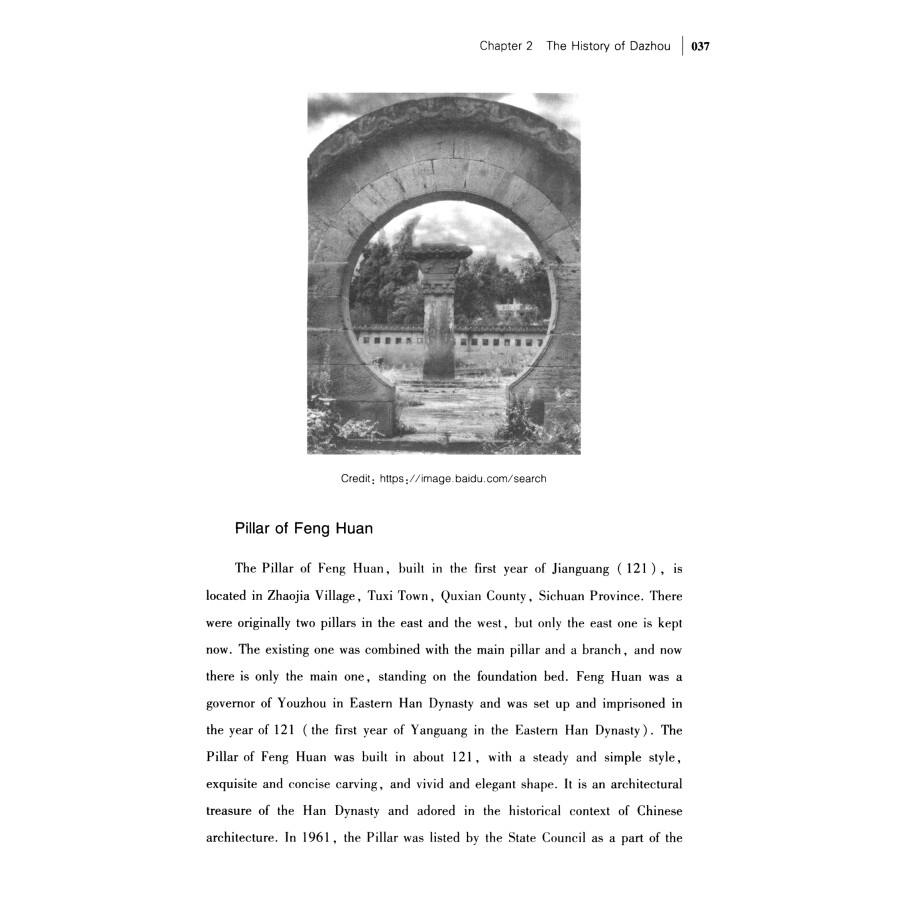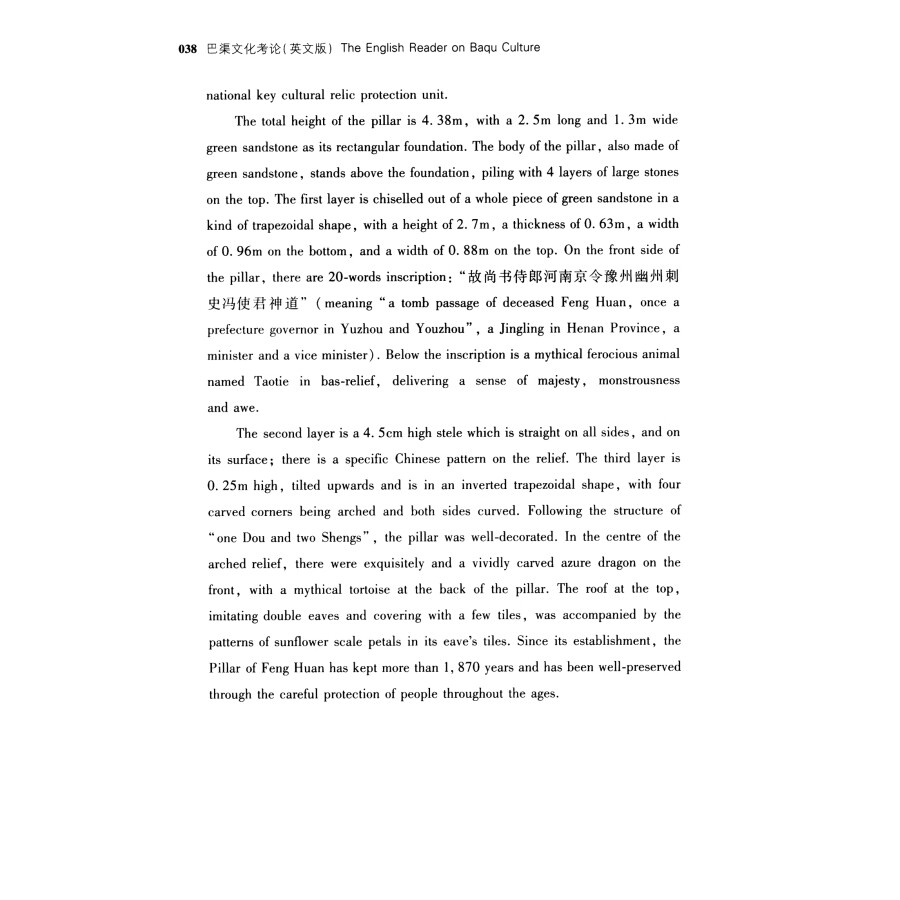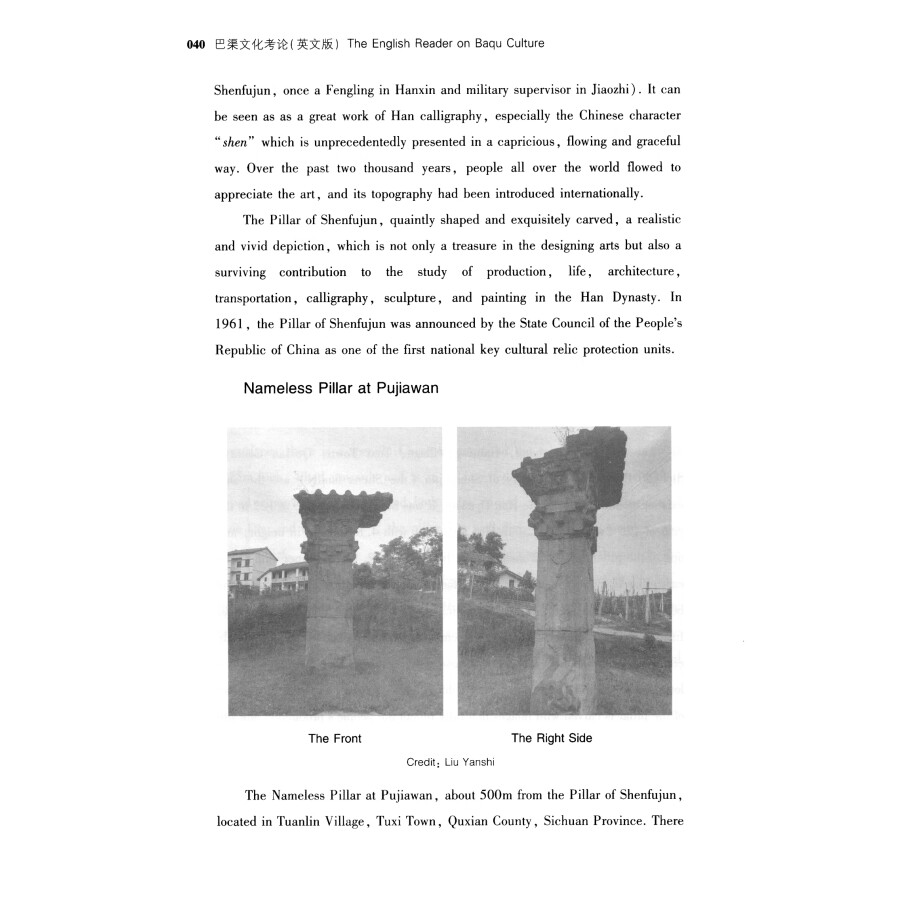Details
The year 2020 is doomed to be special for the whole world with the COVID-19 Pandemic sweeping across almost every corner of the globe. It is also special to me, for it is exactly 20 years when I said goodbye to my second hometown, Dazhou, the center of Baqu culture, which I had been immersed in for eleven years.
The moment I open the manuscript of The English Reader on Baqu Culture (hereinafter Baqu Culture) by Professor Liu Yanshi's translation team, fresh memories flash in front of my eyes, so dear to me: the Zhouhe River where we often walked along with friends after supper; the Fenghuang Mountain we climbed together with family members every January the 9th; the delicious snacks we enjoyed along the bank of Zhouhe River on summer nights...
Eleven years are far from enough for me to know the profundity of Baqu culture in Dazhou. Having finished reading Professor Liu's Baqu Culture, I get to know that I have known so little about Dazhou, about Baqu culture, and finally understand why Su Shi couldn't tell the true face of Lushan Mountain. Here, Baqu Culture is telling us the true face of Dazhou: the relationship of Dazhou with the ancient Belt & Road, the history of Dazhou and Baqu culture, the natural resources, specialties, tourist attractions, folk customs, recreations, the new countryside and international exchanges. As far as I know, Baqu Culture is the first English reader which tells systematically about the history, connotations and profundity of Baqu culture.
Baqu culture, as one of the distinctive regional cultures of China, is created and accumulated by generations of people living in Zhouhe and Qujiang River Basins. It does not simply lie in its outer appearance. It is the inner elements that is more worthy of transmission-the spirit of 'loyalty, courage, faith and righteousness', as Xu Jian puts it. The power of Baqu culture is deeply rooted in the vitality, creativity and cohesion of Dazhou and its people. As one of the integral components of Chinese culture, the colorful cultural landscape of Baqu culture is the driving force for the mutual interpretation, identification, competition, dialogue and integration among different cultures and nations home and abroad.
In today's world, culture, economy and politics blend with each other, playing a more and more important role in the competition of comprehensive national strength. It is our responsibility to carry the brilliant Baqu culture forward, to innovate and hand it down, and let it live forever.
With the strong economic and technological hard power, today's China is in the center stage of the world. China needs to shoulder the responsibility to provide the world with Chinese wisdom and Chinese thoughts, which are deeply rooted in Chinese culture, including Baqu culture, and share our own cultures with people of other countries.
I believe this is what Professor Liu's translation team is intending to do by Baqu Culture.
Table of Contents
Chapter 1 The Silk Road.Dazhou
1.1 Brief Introduction of the Ancient Silk Road
1.2 Location, Jurisdiction and Population of Dazhou
1.3 Litchi Ancient Road
1.4 Micang Ancient Road
Chapter 2 The History of Dazhou
2.1 Development
2.2 Historical Celebrities
2.3 Ba Culture
2.4 Cultural Sites
Chapter 3 Natural Resources
3.1 Natural Gas Resources
3.2 Mineral Resources
3.3 Chinese Herbal Medicine Resources
3.4 Forestry Resources
Chapter 4 Special Agricultural s
4.1 Commercial Cultivation in Dazhou
4.2 Agricultural Specialties in Wanyuan
4.3 Agricultural Specialties in Xuanhan
4.4 Agricultural Specialties in Dachuan
4.5 Agricultural Specialties in Dazhu
4.6 Agricultural Specialties in Kaijiang
4.7 Agricultural Specialties in Quxian
Chapter 5 Featured Delicious Food
5.1 Specialty of Meat
5.2 Special Rice Wines
5.3 Vegetarian Specialties
5.4 Special Snacks
5.5 Special Braised Dishes
Chapter 6 Tourist Attractions
6.1 Famous Mountains
6.2 Canyons
6.3 Parks
6.4 Hot Spring
6.5 Temples
6.6 Ancient Towns
6.7 Memorial Archways
6.8 Others
……
Chapter 7 Colorful Folk Customs
Chapter 8 The Development of a New Countryside
Chapter 9 International Exchanges
Chapter 10 Public Intellectual and Recreational Lives
Postscript



